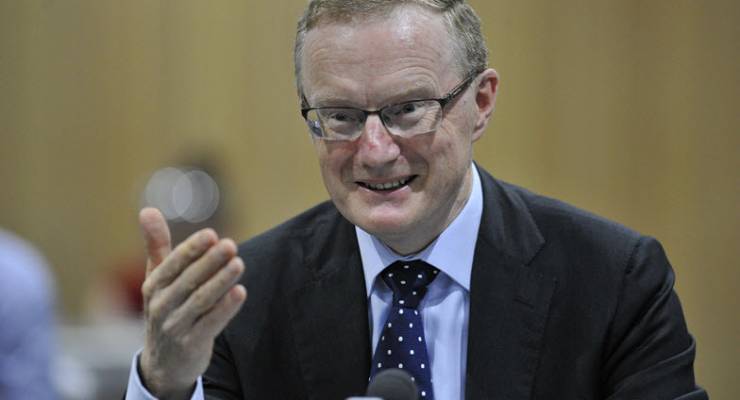
The Reserve Bank didn’t cut rates yesterday — enabling the Morrison government to dodge a bullet — but it has laid down, fairly clearly, that it is going to cut rates unless unemployment falls. The last paragraph of yesterday’s statement from Governor Philip Lowe is clear: the bank would leave rates on hold, but:
In doing so, [the board] recognised that there was still spare capacity in the economy and that a further improvement in the labour market was likely to be needed for inflation to be consistent with the target. Given this assessment, the Board will be paying close attention to developments in the labour market at its upcoming meetings.
This is the flipside of the RBA’s previous view that it would only lower rates if inflation held steady and unemployment rose. It was then wrong-footed by a fall in inflation. So it has adjusted its stance: unemployment now has to fall, given that inflation is going to remain below the bank’s target band, at 1.75% this year — a forecast that is down from the 2% previously estimated by the bank. The April jobs data, which will be available in two weeks, will therefore be the subject of the bank’s “close attention” to see if unemployment falls.
If the RBA decision disappointed Labor, the statement contained a line that summed up exactly the argument the opposition has been making about wage stagnation: “The main domestic uncertainty continues to be the outlook for household consumption, which is being affected by a protracted period of low income growth and declining housing prices.”
“Protracted period of low income growth.” That’s the government wage stagnation at work, a “deliberate feature” of the government’s IR policy, according to the Finance Minister Mathias Cormann. Yesterday’s retail trade data for March demonstrated it. Despite some solid figures for February and March, retail sales contracted (in volume terms) in the quarter for the first time in six and a half years. Relatively strong growth in areas like cafes and restaurants, and clothing and footwear was offset by a substantial fall in household goods retailing.
But Lowe and the bank board retain a Pollyannaish belief that everything will be fine. “Some pick-up in growth in household disposable income is expected and this should support consumption.” — which is despite the RBA’s own forecasts from February that WPI growth will increase from 2.4% to a mighty 2.6% over the next two years (we’ll see how that forecast fares in the next Statement of Monetary Policy on Friday).
There was more good news for the government yesterday: the trade figures for March showed a huge surplus of $4.9 billion (seasonally adjusted), with the February surplus being revised up to $5.1 billion. That strength in the trade account has been due to higher prices for iron ore and LNG in particular and it is by far the best performing sector of the economy. That’s great news for tax revenues for the federal, WA and Queensland governments — though very little of it is making its way to the bank accounts of workers.
For now, we’ll see what the next jobs data brings, and what it means for the next RBA gathering in June, when there will be a new government. Before then, Lowe has a major speech planned for May 21, the day the minutes of yesterday’s meeting are released, which may shed more light on the bank’s thinking in the lead-up to June.









Who believes that a cut below 1.5% will suddenly galvanize spending and investing? The cost of money is not the problem. It is uncertainty.
The global economy has reached a place with no obvious exit. There are zero interest rates in Europe and the largest and second largest economies are trying to get the other to back down from a trade war. Meanwhile Japan and Europe cannot sell government bonds to the private sector.
Standby for a complete political reset with outsiders moving into power. Who knows what they will do?
Will we see the magic bubble burst on the neolib mantra of interest rates as the main (sole ?) lever of economic policy ? If only the reserve chaps could dictate a bit of wage growth or limit the rent seeking on essential utility prices.
There are some clues in the article. Weak retail goods but stronger services like cafes etc. There are only so many bits of crap we can jam into our houses and, increasingly, dog box flats. But there are a lot of great budget eating and drinking options in nicer places nowadays. Worth pondering I reckon.
If ever there were a time government should be borrowing to fund real, future oriented infrastructure aimed at minimising emissions it is now when capital is begging to be used.
Fiat money aside (valid but beyond sane discussion by pollies terrified of the Masters – hint, it ain’t the electorate), there is also a solid opportunity to offer We, the People at real chance of doing good by doing well – T-Bonds offering tax free interest 0.5% above the derisory rates offered by commercial banks.